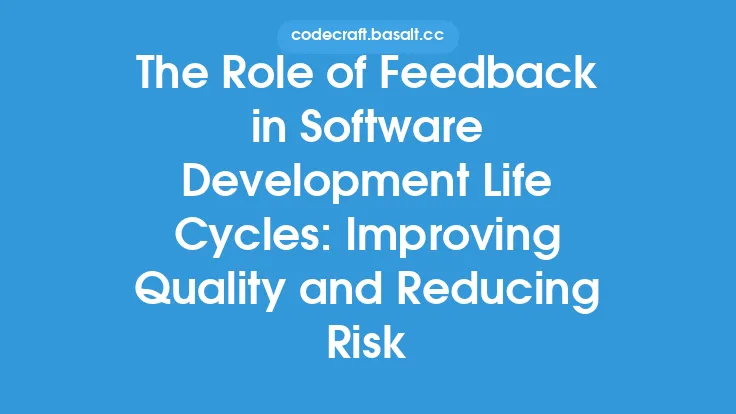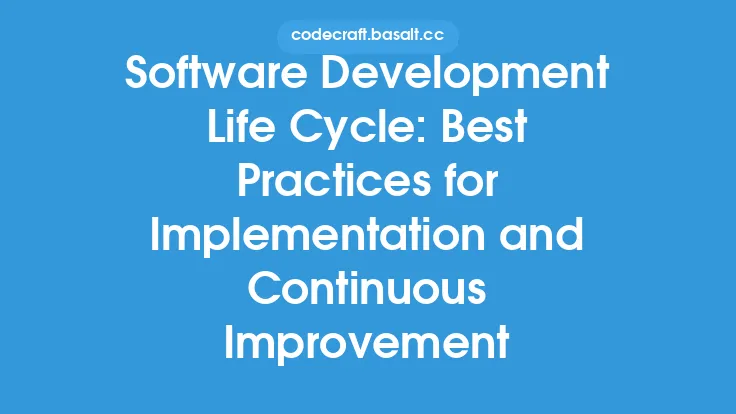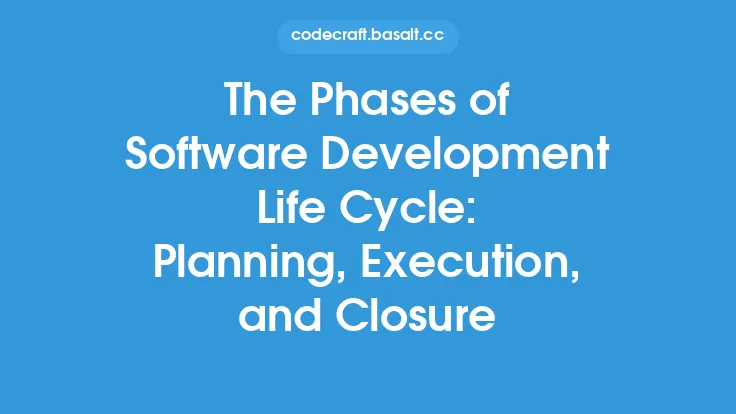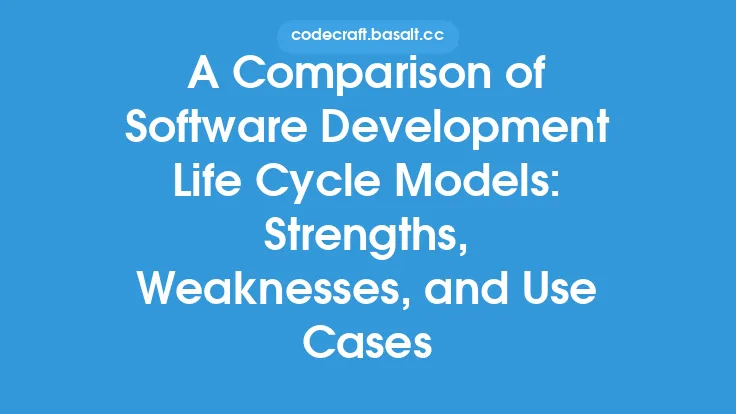In the realm of software engineering, the development life cycle is a crucial aspect that determines the success of a project. With the ever-evolving nature of technology and the increasing complexity of software systems, it has become essential to adopt a flexible and adaptive approach to software development. One such approach is the hybrid software development life cycle, which combines different methodologies to achieve optimal results. This article delves into the concept of hybrid software development life cycles, exploring their benefits, challenges, and best practices for implementation.
Introduction to Hybrid Software Development Life Cycles
Hybrid software development life cycles involve combining two or more different methodologies, such as Agile, Waterfall, and V-Model, to create a customized approach that suits the specific needs of a project. This approach recognizes that no single methodology is perfect and that different projects require different approaches. By combining the strengths of multiple methodologies, hybrid life cycles can provide a more flexible, efficient, and effective way of developing software.
Benefits of Hybrid Software Development Life Cycles
The benefits of hybrid software development life cycles are numerous. Firstly, they allow for greater flexibility, enabling teams to respond quickly to changing requirements and stakeholder needs. Secondly, they provide a more efficient way of working, as teams can leverage the strengths of different methodologies to streamline their development process. Thirdly, hybrid life cycles can improve the quality of the software, as they allow for a more comprehensive and iterative approach to development. Finally, they can reduce the risk of project failure, as teams can adapt their approach to mitigate potential risks and issues.
Challenges of Hybrid Software Development Life Cycles
While hybrid software development life cycles offer many benefits, they also present several challenges. One of the primary challenges is the complexity of combining different methodologies, which can lead to confusion and inconsistencies. Secondly, hybrid life cycles require a high degree of flexibility and adaptability, which can be difficult to achieve, especially in large and distributed teams. Thirdly, they demand a deep understanding of different methodologies and their strengths and weaknesses, which can be a significant challenge for teams with limited experience. Finally, hybrid life cycles can be difficult to scale, as they require a high degree of customization and tailoring to the specific needs of the project.
Best Practices for Implementing Hybrid Software Development Life Cycles
To overcome the challenges of hybrid software development life cycles, several best practices can be adopted. Firstly, teams should have a deep understanding of different methodologies and their strengths and weaknesses. Secondly, they should establish clear goals and objectives for the project, as well as a well-defined scope and requirements. Thirdly, teams should adopt a flexible and adaptive approach to development, leveraging the strengths of different methodologies to respond to changing requirements and stakeholder needs. Fourthly, they should establish a robust governance framework, which includes clear roles and responsibilities, as well as a well-defined decision-making process. Finally, teams should continuously monitor and evaluate their hybrid life cycle, making adjustments and improvements as needed.
Common Hybrid Software Development Life Cycles
Several common hybrid software development life cycles have emerged in recent years. One such approach is the Agile-Waterfall hybrid, which combines the flexibility of Agile with the structure and predictability of Waterfall. Another approach is the V-Model-Agile hybrid, which combines the verification and validation-driven approach of V-Model with the iterative and incremental approach of Agile. Other hybrid approaches include the Spiral-Agile hybrid, which combines the risk-driven approach of Spiral with the flexibility of Agile, and the Incremental-Waterfall hybrid, which combines the incremental approach of Incremental with the structure and predictability of Waterfall.
Tools and Techniques for Hybrid Software Development Life Cycles
Several tools and techniques can be used to support hybrid software development life cycles. One such tool is the project management framework, which provides a structured approach to managing the project. Another tool is the agile project management tool, which provides a flexible and iterative approach to development. Other tools and techniques include the requirements management tool, which provides a comprehensive approach to managing requirements, and the testing and quality assurance tool, which provides a robust approach to ensuring the quality of the software.
Case Studies of Hybrid Software Development Life Cycles
Several case studies have demonstrated the effectiveness of hybrid software development life cycles. One such case study is the development of a complex software system for a large financial institution, which used a combination of Agile and Waterfall to deliver the project on time and within budget. Another case study is the development of a mobile application for a startup, which used a combination of Agile and V-Model to deliver a high-quality application with a short timeframe. Other case studies include the development of a cloud-based software system for a large enterprise, which used a combination of Spiral and Agile to deliver a scalable and secure system, and the development of a software system for a government agency, which used a combination of Incremental and Waterfall to deliver a reliable and maintainable system.
Conclusion
Hybrid software development life cycles offer a flexible and adaptive approach to software development, combining the strengths of different methodologies to achieve optimal results. While they present several challenges, including complexity, flexibility, and scalability, they can be overcome by adopting best practices, such as having a deep understanding of different methodologies, establishing clear goals and objectives, and adopting a flexible and adaptive approach to development. By leveraging the benefits of hybrid software development life cycles, teams can deliver high-quality software systems that meet the needs of stakeholders and users, while minimizing the risk of project failure. As the software engineering landscape continues to evolve, hybrid software development life cycles are likely to play an increasingly important role in the development of complex software systems.





